Reiteration as Making: Tales of Star Chairs Remade
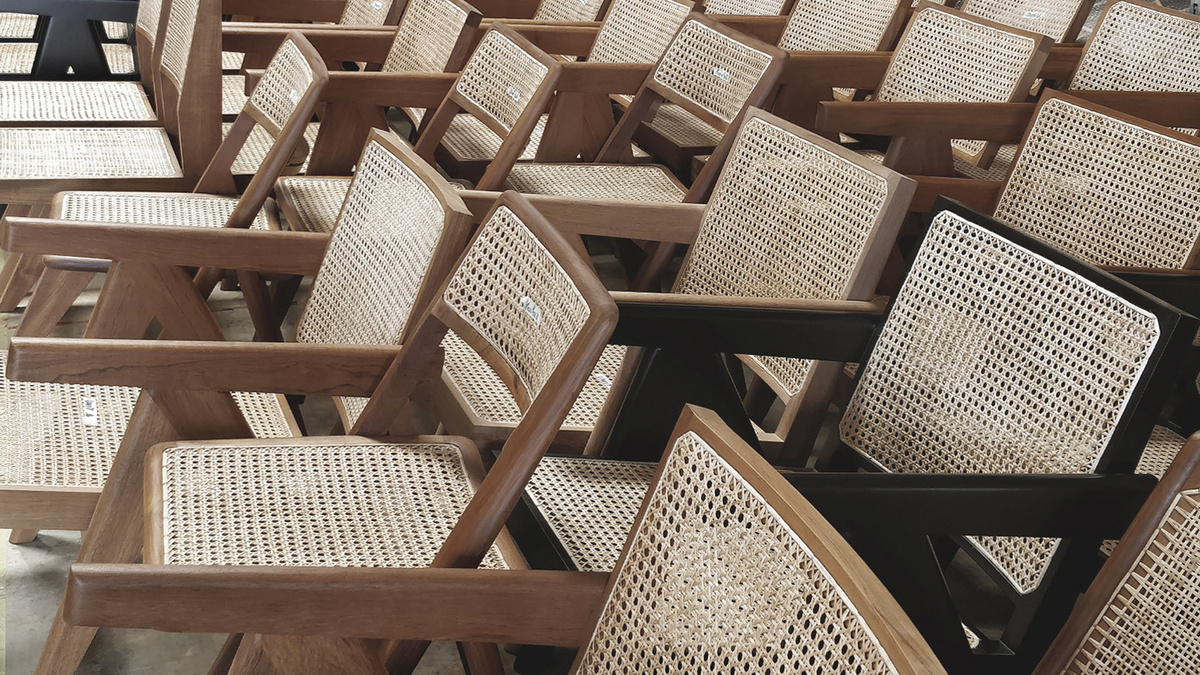
Phantom Hands Cross Easy Chair from Project Chandigarh Collection.
Parni Ray
11.12.2020
The story of a piece of furniture starts with its making.
Typically, a furniture designer will not be the one to produce their own design but rather grant one – or multiple – manufacturers the right to make it. Legally, such a permit is known as a license.
Owning the license for a design grants a manufacturer the right to make a piece of furniture over and over again, for as long as they like. It also allows them the freedom to stop making it for a while – a year, or even a decade – and then reissue it later. A re-edition is such a reissued design, manufactured after a period of time.
Here is a look at four famous chairs that have continued to be reissued since their first iteration in the early to mid-20th century.
Re-editions of furniture are common. Sometimes, they are the result of an attempt at resurrecting a forgotten or even a previously underappreciated design. At other times, they are an organic part of the design process which usually involves several reproductions and upgrades.
Even iconic pieces go through multiple iterations based on the whims of the designer and feedback from users and critics. Over the years, they might also need to be updated to keep up with the shifting realities of our living circumstances and socio-cultural preferences. This is why re-editions are often optimized versions of the old design.
Despite this, people often understand the initial design of an object to be the ‘original’ and re-editions to be ‘copies’. This draws from the late 19th to early 20th century anxiety around mechanical – specifically photographic – reproduction of fine art, which was perceived to devalue the original work of art by making it ubiquitous.
But this logic, centered around a single, authentic creation, does not apply to design, especially mass-produced design objects, since it relies entirely on reproducibility. In design logic, all re-editions are originals, irrespective of when they are produced, so long as the manufacturers meet all pertinent legal conditions.
"Even iconic pieces go through multiple iterations based on the whims of the designer and feedback from users and critics.
Since the '60s, several renowned furniture companies have acquired the rights to reissue furniture. These have managed to keep in circulation important pieces whose first iterations are often in museums and private collections.
Below, we look at four influential, early- and mid-century chairs which have enjoyed star status in the furniture world for years and continue to be admired and reissued.
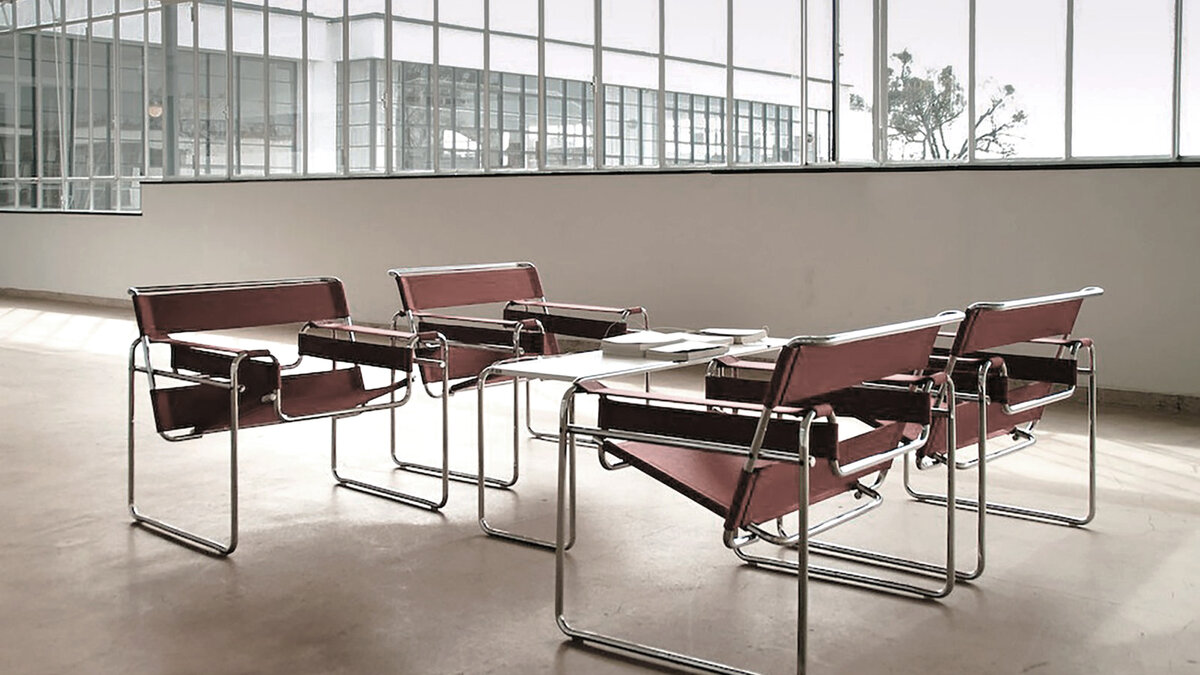
Image courtesy: Wikicommons.
THE WASSILY CHAIR
When one speaks of the designer Marcel Breuer, it is often in reference to his renowned, large-scale architectural work: the Whitney Museum of American Art in New York (later known as the Met Breuer), the UNESCO headquarters in Paris, and the IBM Laboratory in La Gaude. But his initial work, which includes furniture, captures his rarely celebrated prowess over small-scale design.
In the early '20s, Breuer, then the head of the cabinetmaking workshop at Bauhaus, created one of the most iconic chairs in furniture history – the Wassily. He was 22 and had just bought his first bicycle to ride around in Dessau. The bike’s lightweight, tubular steel frame had left him fascinated.
Steel tubing of this kind had only just been made possible by a new process that German steel manufacturer Mannesmann had perfected. Where as steel tubes earlier had a welded seam and collapsed if bent, the new process allowed tubes of any length to be squeezed out of a mould and be bent into any shape.
This new development set Breuer out to experiment with bent steel tubes in his furniture design. He hired a plumber to teach him to weld the steel tubes together and used the Bauhaus weaving workshop to make the fabric that initially served as the seating.
The signature style that emerged from these trials would produce the Wassily and then the Cesca, forever changing the industry at a time when most furniture was built out of wood.
'Most Logical, Least Cozy'
The Wassily was initially called the Model B3. It was later renamed after Breuer’s friend, the artist Wassily Kandinsky, who admired the design and was given an early edition by the designer. Characterized by its austere form, even Kandinsky would probably hesitate to call the Wassily ‘comfortable’. Breuer himself described it as his ‘most logical’ and ‘least cozy’ creation. Despite this, however, the chair has never gone out of production since the 1950s.
It was first manufactured by Thonet in 1925. In this early iteration, the chair was available in folding and non-folding variations, the straps were fabric and they were pulled taut on the reverse side with springs. A fall in buyer interest, however, led the company to drop the chair for a few years.
Shortly after WWII, Knoll took up its production. The first re-edition introduced a number of updates, the most significant among which was the replacement of the fabric with leather. After three decades of production, this version became especially popular in the '80s when leather and chrome furniture came into vogue.
Although the patent on the design has now expired, the trademark name rights still belong to Knoll, who continue to produce the chair. The belting leather is now available in a variety of colours, including dark salmon, key lime, and lemon meringue. Besides leather, the seating slings are sometimes made from canvas, even cowhide. The steel tubes are offered in the classic chrome as well as in an 18K gold finish.
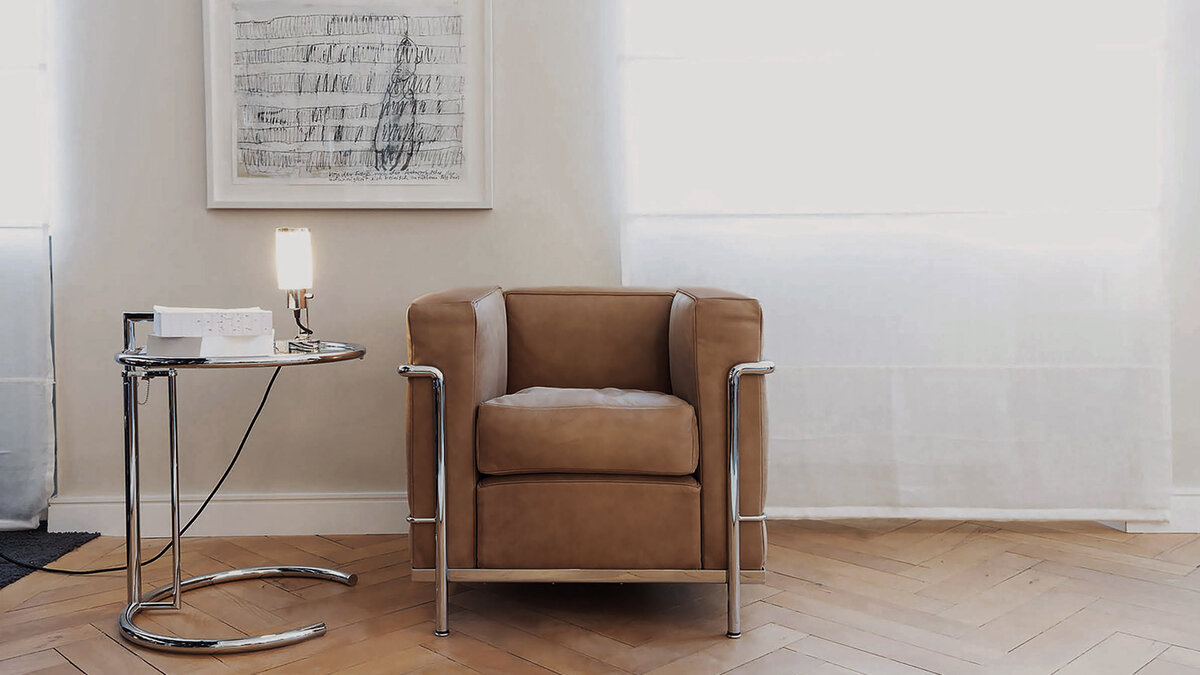
Image courtesy: Wikicommons.
THE LC FAUTEUIL GRAND CONFORT, PETIT MODÈLE
In 1927, Le Corbusier and Pierre Jeanneret were invited to design a house meant for an educated, middle-class family for the Die Wohnung Exhibition at Stuttgart. The event had been curated by the Deutscher Werkbund, a German association of artists, designers and architects, and was overseen by Ludwig Mies van der Rohe.
Sixteen other architects, including Walter Gropius and Peter Behrens, had been called upon to showcase new domestic architecture along with Le Corbusier and Jeanneret. In total, 21 buildings and 60 dwellings were exhibited at what became the Weissenhof Estate.
The houses were furnished. Corbusier and Jeanneret’s house was outfitted with Thonet’s classic bentwood furniture, while a number of the other houses had the sleek, new steel furniture by the likes of Breuer and van der Rohe.
Le Corbusier, who was critical of handcrafted wood furniture and championed mass production, admired the steel furniture. Shortly after the Stuttgart exposition, he would take up furniture design. Bent steel tubes would be a feature of a majority of them.
An expanded version of this furniture line was also exhibited as part of Le Corbusier’s 1929 Salon d’Automne installation, ‘Equipment for the Home’. The LC-2, Petit Modèle, shaped like a cushy cube, was part of this furniture lineup.
House as a Living Machine
By this time, Le Corbusier had already written the Vers Une Architecture and L'Art Décoratif d'aujourd'hui, and declared the house to be ‘a machine for living in’. To put his grandiose theories into action and formulate the equipment for inhabitation, however, the modernist doyen would turn to the 24-year-old Charlotte Perriand, a recent École de L'Union Centrale des Arts Décoratifs graduate.
Over their decade-long partnership (alongside Pierre Jeanneret), they would design three chrome-plated tubular chairs for the Maison la Roche and Barbara and Henry Church’s Villa Church. An expanded version of this furniture line was also exhibited as part of Le Corbusier’s 1929 Salon d’Automne installation, ‘Equipment for the Home’.
The LC-2, Petit Modèle, shaped like a cushy cube, was part of this furniture lineup. Its makers described it as ‘cushion baskets’ and clearly drew inspiration from both the art deco club chair as well as Breuer’s designs with bent steel pipes.
Many think that Corbusier, an older, renowned, powerful man in a world run by powerful men, often took credit for Perriand’s work. Although she clearly had a significant (if not the primary) hand in the creation of the LC furniture line, the designs for the LC 2 and other pieces from the series were ‘owned’ by Le Corbusier.
They are sold today, as they have always been, under his name: LC is an abbreviation of Le Corbusier.
The LC collection was set up by the furniture-making company Cassina in collaboration with the Fondation Le Corbusier, in 1960. Reissues of the LC 2 feature both chrome and painted steel frames, and cushions can also be upholstered in fabric.
Despite Corbusier’s famous distaste for sofas (‘Chairs are architecture, sofas are bourgeois’), the LC2 is now available as two- and three-seater sofas as well.
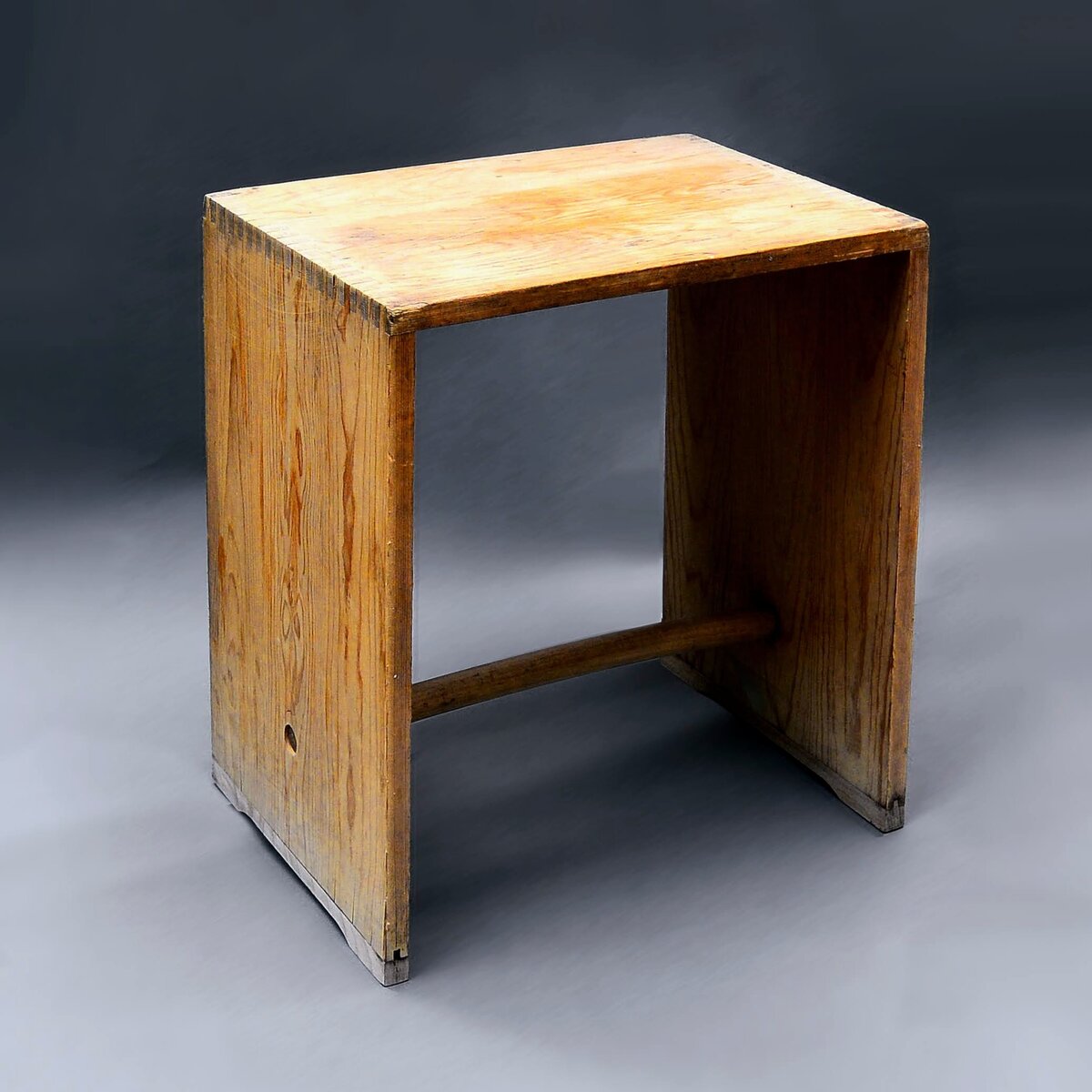
Image courtesy: Wikicommons.
THE ULMER HOCKER
Unlike the other entries on this list, the Ulm Stool is not a chair, but it does provide seating and much more.
When Inge Aicher-Scholl, Otl Aicher and Max Bill founded the influential Hochschule für Gestaltung (HfG or the Ulm School of Design), they quickly realized the need for chairs in the school’s classrooms and cafeterias.
But it was 1953 and the embers of WWII hadn’t quite settled in Germany; like the rest of the country, the enthusiastic proponents of the HfG were also cash-strapped. To be frugal, they did up much of the school themselves. Besides the building (designed by Bill), the faculty also created the Ulm stool (or Ulmer Hocker) to address the school’s seating needs.
Made of three planks of untreated spruce wood and a lateral bar, the lightweight Hocker was made by Bill and his colleagues Hans Gugelot and Paul Hildinger. Its minimal form abided by the adage ‘Good design is as little design as possible,’ and was truly multifunctional. Apart from providing a seat, it could also serve as a tray, a shelving unit, a side table, a caddy, and a desk.
This uber functionality along with the stool’s stylistic resilience, versatility and economic use of material, all embodied the principles the Ulm school of design would soon come to be associated with. It was fitting, therefore, that all Ulm students owned a stool of their own.
Re-editions of Ulm
Although the HfG closed down in 1968, both vintage pieces as well as re-editions of the stools are still found at museums, public areas, galleries, stores, offices and schools today.
Re-editions, currently manufactured and marketed by wb form, are made in Germany and Switzerland, and available widely. Although these remain true to the form of the stools at Ulm, they are not quite as austere as these first iterations. The inexpensive spruce has been replaced with pine, beech, even walnut.
The unfinished look has been switched up for as many as nine different shades, including black, lemon yellow, orange, and red. They also often come fitted with a drawer to make the stools more effective as a side table.
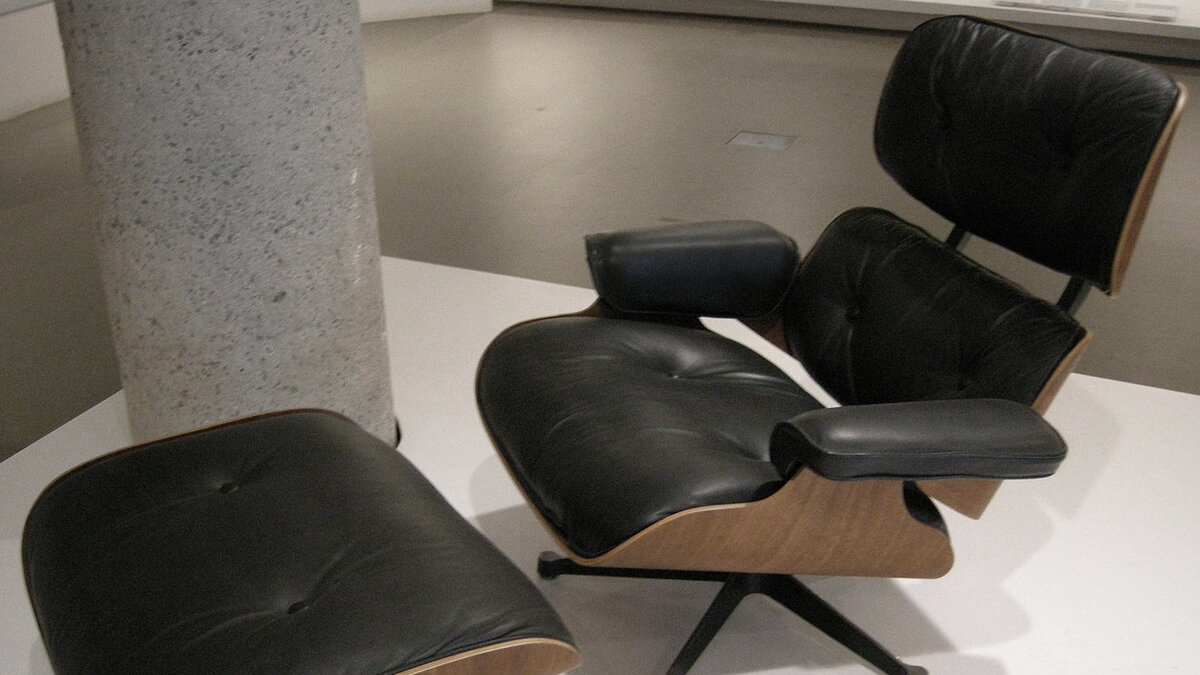
Image courtesy: Wikicommons.
EAMES LOUNGE CHAIR (AND OTTOMAN)
The Eames Lounge Chair is one of the most influential chairs in furniture design history.
The exact reason for its fame may be difficult to pin down, but the factors contributing to it are not hard to list. It begins with its creators, the celebrated design duo and husband-wife Ray and Charles Eames, and ends with Herman Miller and Vitra, two of the biggest names in the global furniture industry, who have been producing the chair since the '50s.
But perhaps just as important is the simple but revolutionary idea with which the chair began – to create a high-end chair with a luxury price point that can be mass produced.
Charles Eames is said to have aimed for the chair to be as snug and warm as a 'well-used first baseman’s mitt'. The designers also drew inspiration from the enveloping cushiness of the classic club chair. Like it, the lounge chair relied on the leather upholstery for its colour scheme and visual appeal.
What set it apart, however, was its seven-ply Brazilian rosewood veneer shell.
Ray and Charles had experimented with plywood for years. They had molded it into leg splints for the US Navy during WWII, and used it in their DCW and LCW chairs. Almost unprecedented in furniture design at the time, the Eames’ were among the first designers to introduce plywood to the industry. With the smooth, molded ply curves of the lounge chair, they announced their mastery over the material.
Iconic, But Not Earth-Friendly
By the '90s, however, the exuberance around the material components of the Eames Lounge Chair had dwindled.
As conversations around environmental waste and the furniture industry’s contribution to landfills and climate change started to build, manufacturers realized that though iconic, the lounge chair wasn’t quite earth-friendly. It wasn’t recyclable or composed of recycled materials; even the process of its making wasn’t environmentally conscious.
Re-editions of the chair have attempted to address these shortcomings since. In 2006, as part of the 50th anniversary celebrations of the chair, it was announced that the new models of the chair would replace the rosewood – which has become endangered – with (sustainably procured) Santos Palisander. Previously, Herman Miller had also switched up the rosewood with walnut and cherry.
Re-editions of the Eames Lounge Chair have attempted to address its shortcomings. In 2006, as part of the 50th anniversary celebrations of the chair, it was announced that the new models of the chair would replace the rosewood.
Variations in Size and Finishes
Stylistic changes have been introduced too. In 2002, designer Hella Jongerious designed a white leather and light wood veneer variant of the chair. This re-edition, which the manufacturers claim was issued in keeping with the demands of the marketplace, is now sold alongside the black leather and dark wood version.
In response to feedback from users and the fact that people are generally growing taller worldwide, the chair manufacturers have also developed variations of the chair – Herman Miller’s ‘Tall’ version, Vitra’s XL – to make it more accessible to taller people.
See re-editions of Ray and Charles Eames' Plywood Elephant toy launched by Vitra in 2020 here.
Buy '100 Midcentury Chairs: And Their Stories' by Lucy Ryder Richardson, which follows the tales of many famous chairs, several still in production, here.
Read about the making of a re-edition of the iconic Chandigarh Chairs by Phantom Hands here.
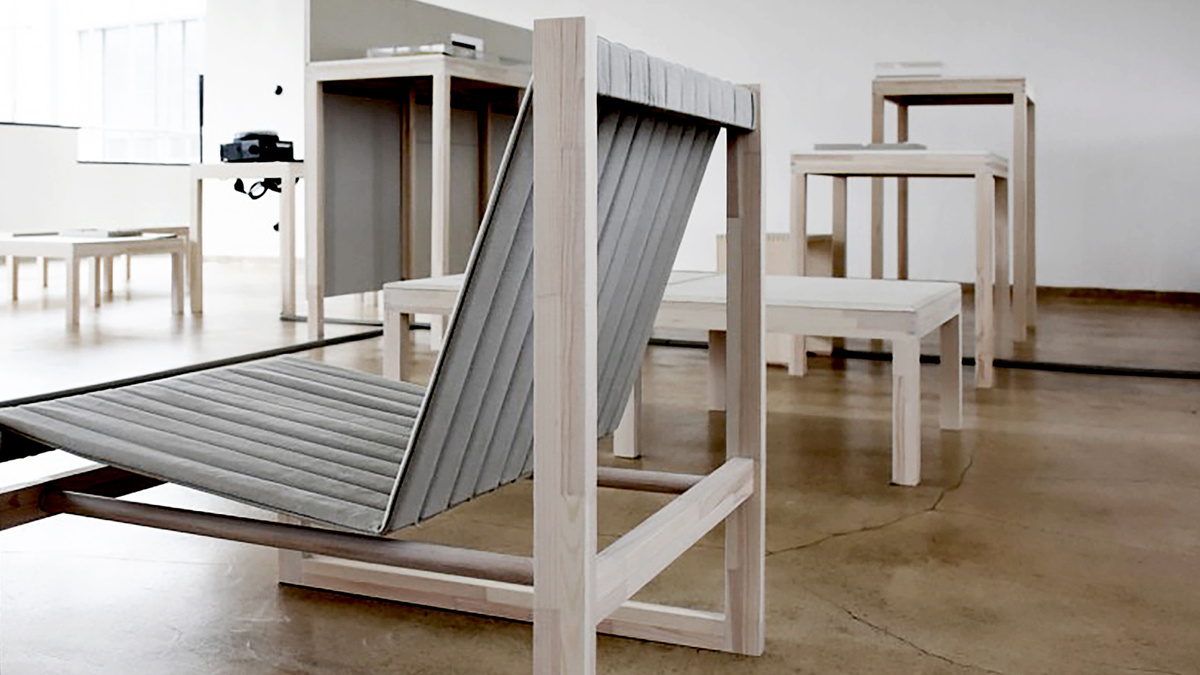
Design Cosmopolitanism: 'Between Chairs' Exhibition, Bauhaus Dessau, 2017
The Bauhaus Lab 2017 'Between Chairs' was a research programme on global modernism at Bauhaus, Dessau. For the culminating exhibition, participants recreated the India Lounge designed by Gajanan Updhayaya and Hans Gugelot.
Read More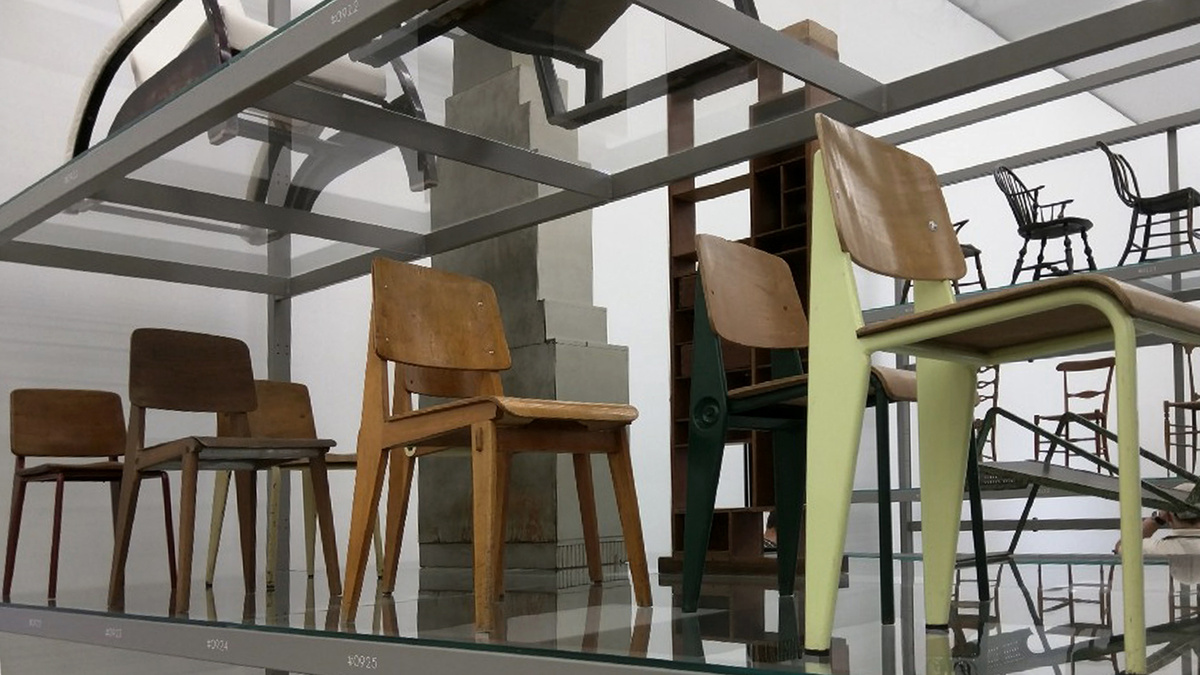
A Day at the Vitra Design Museum, Weil am Rhein
Some images from a recent visit to the Vitra Campus in Weil am Rhein, a German town just across the border from Switzerland.
Read More